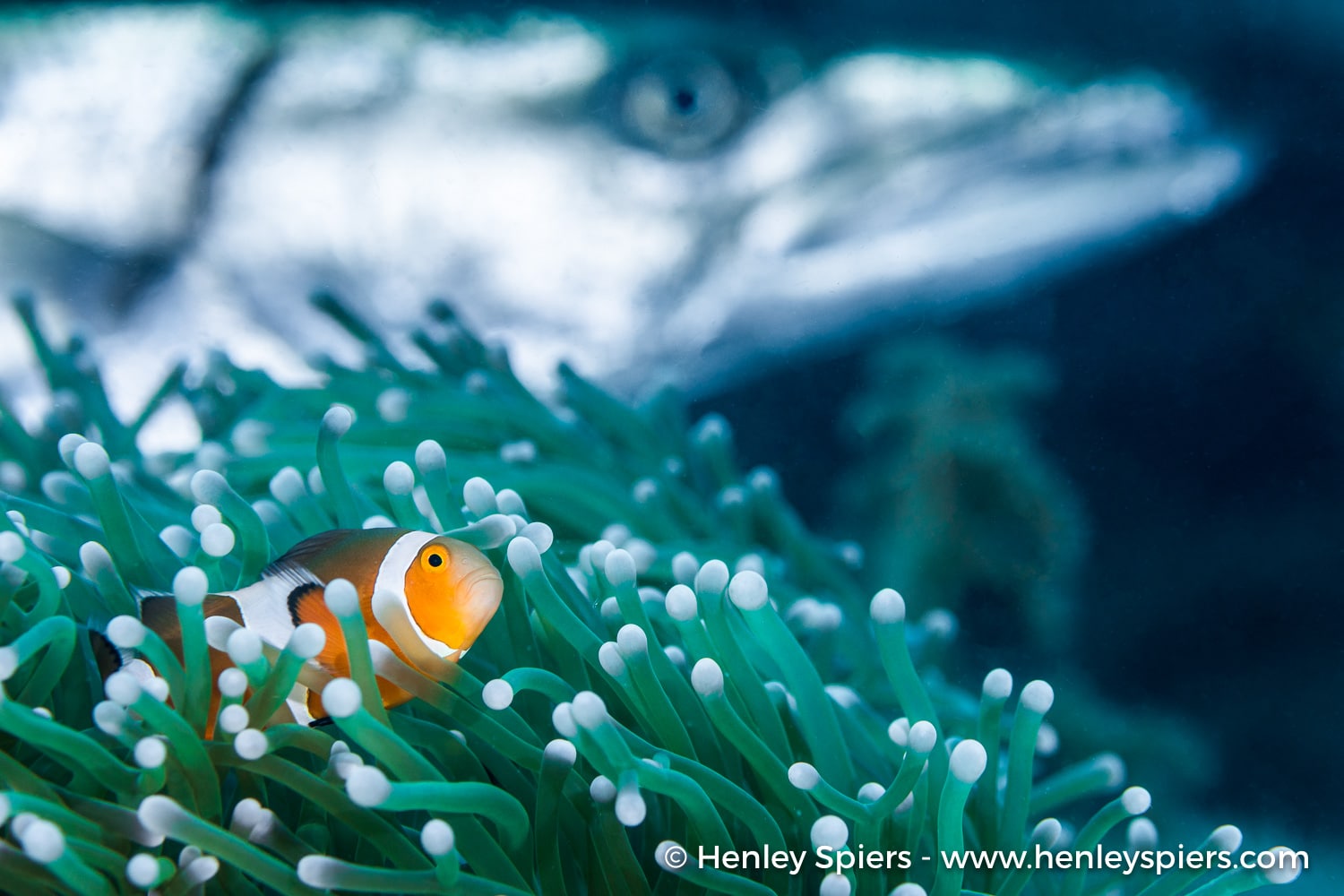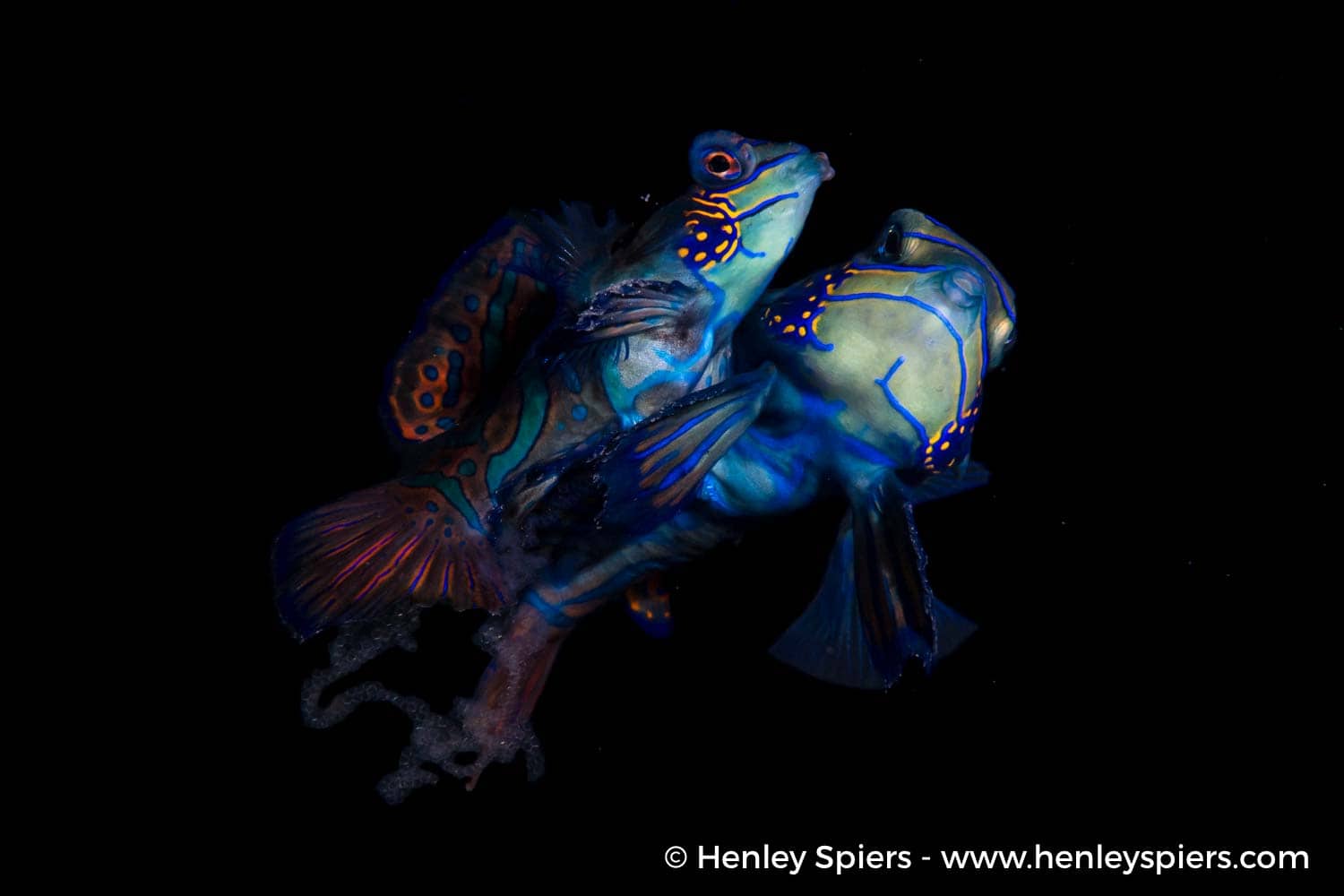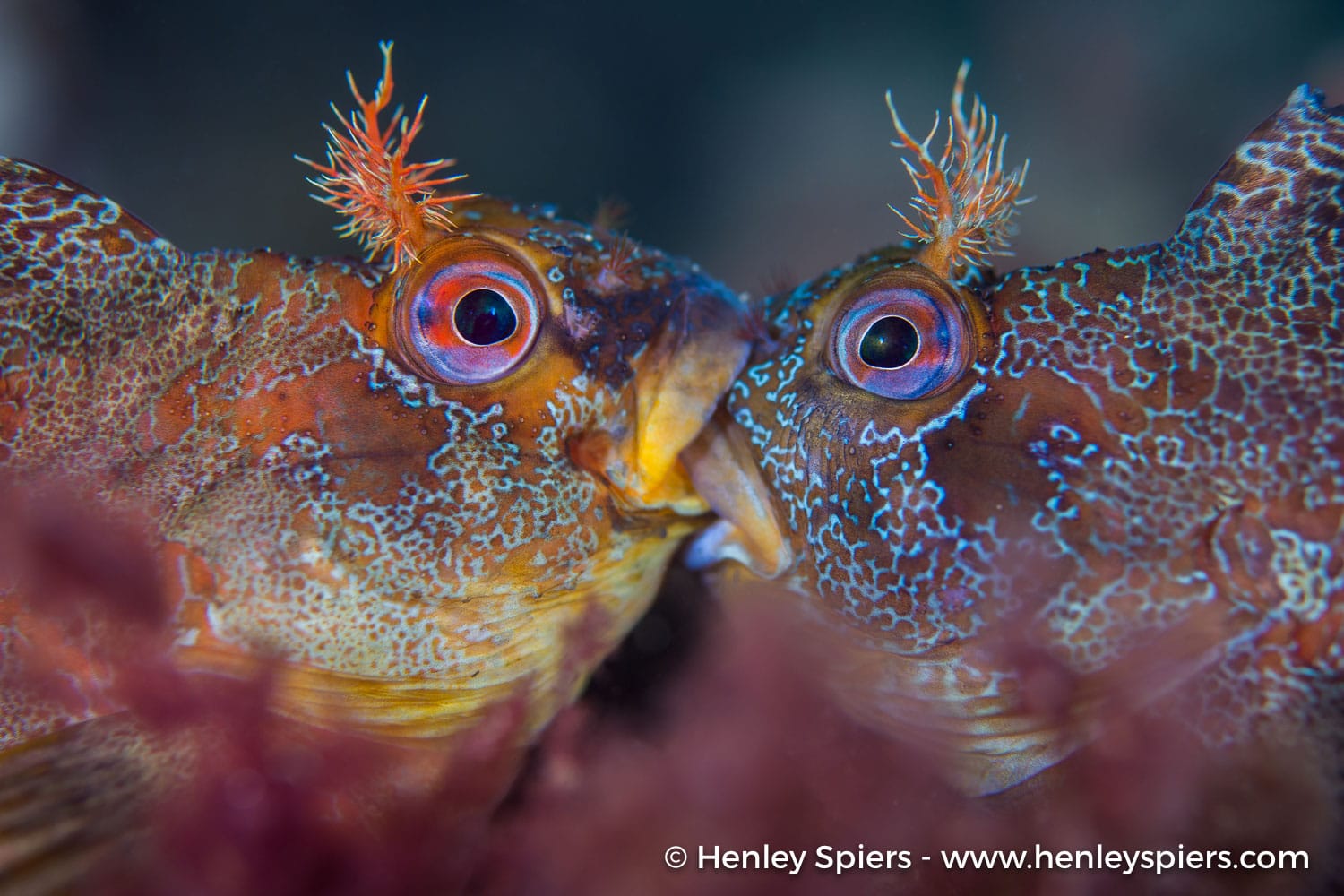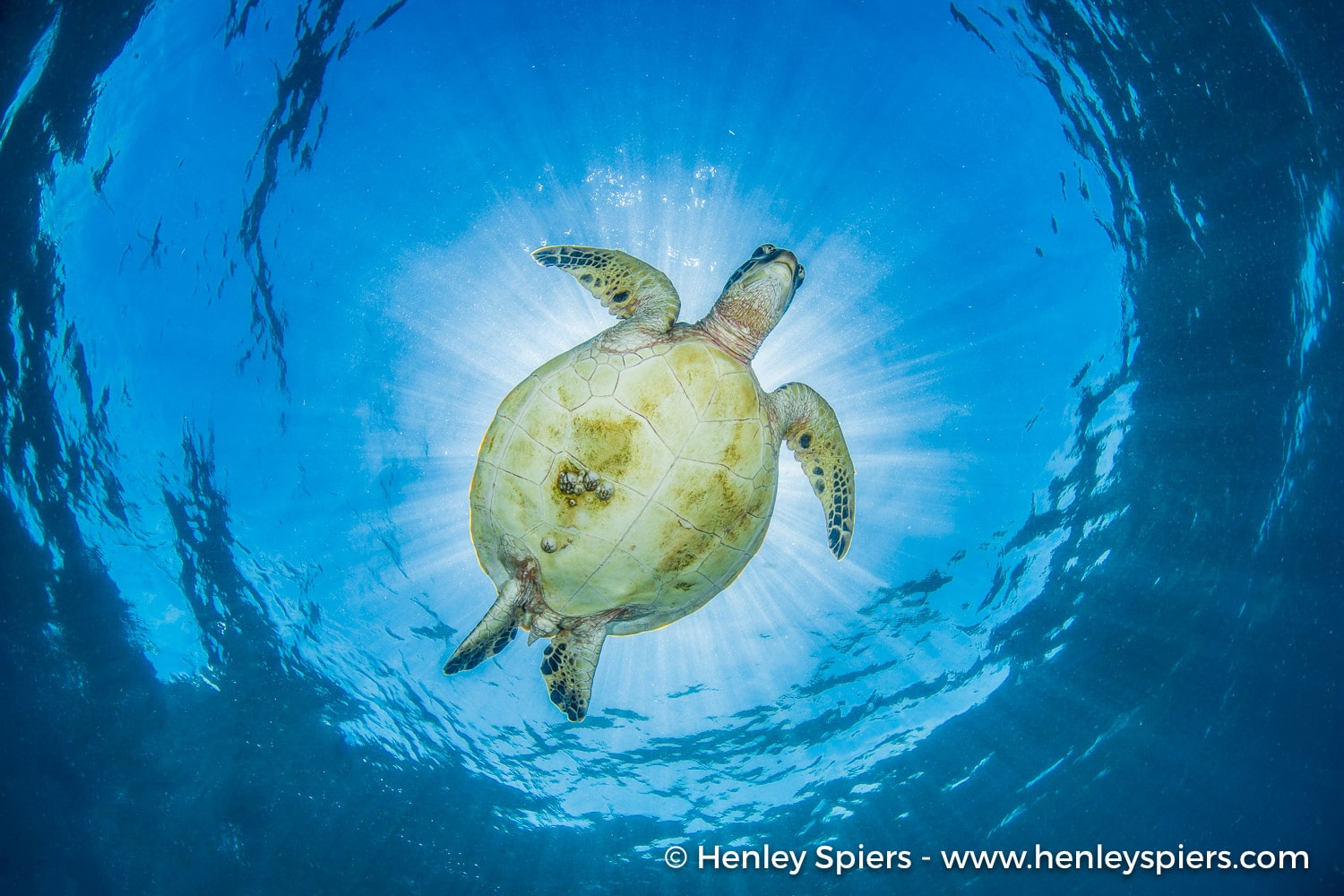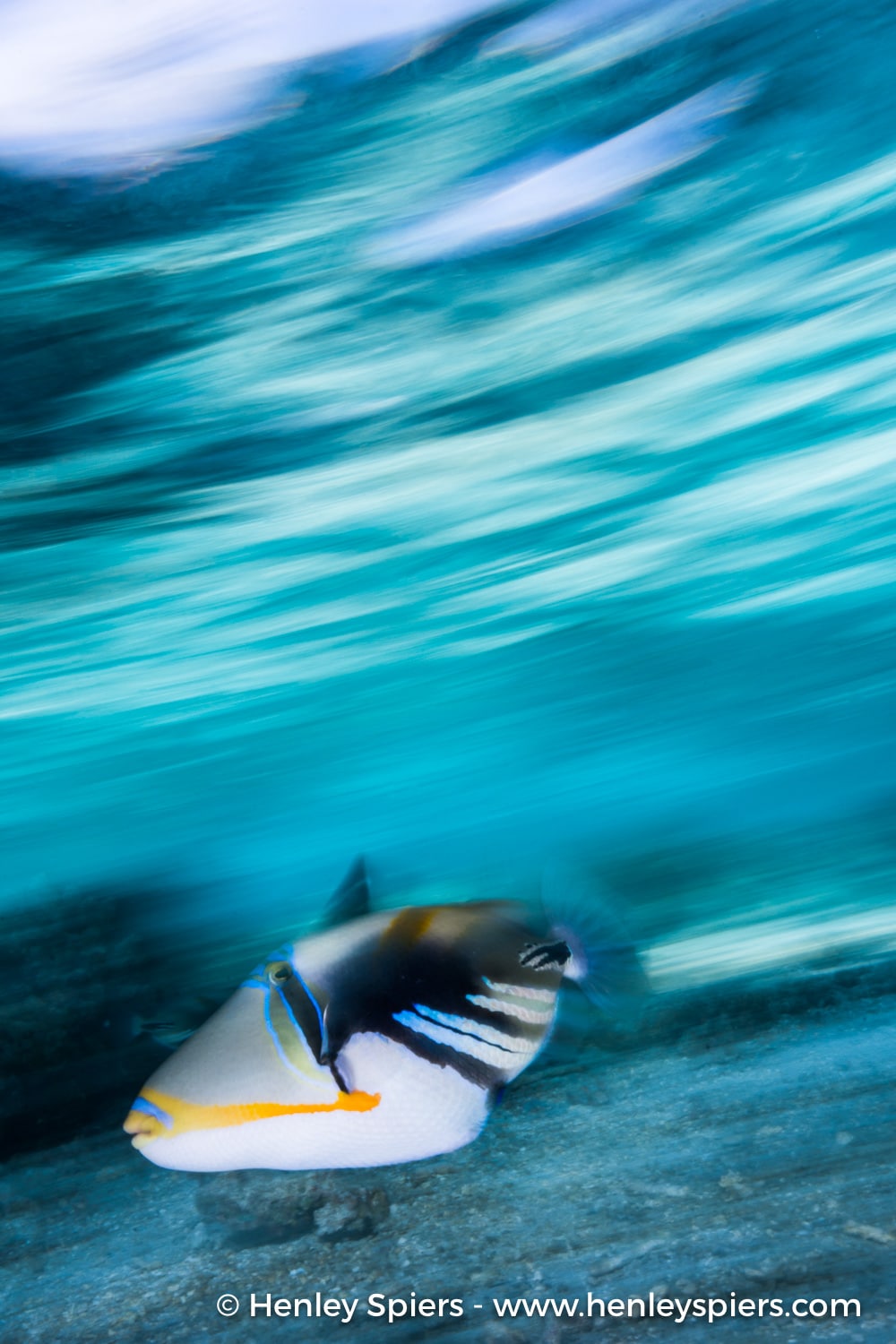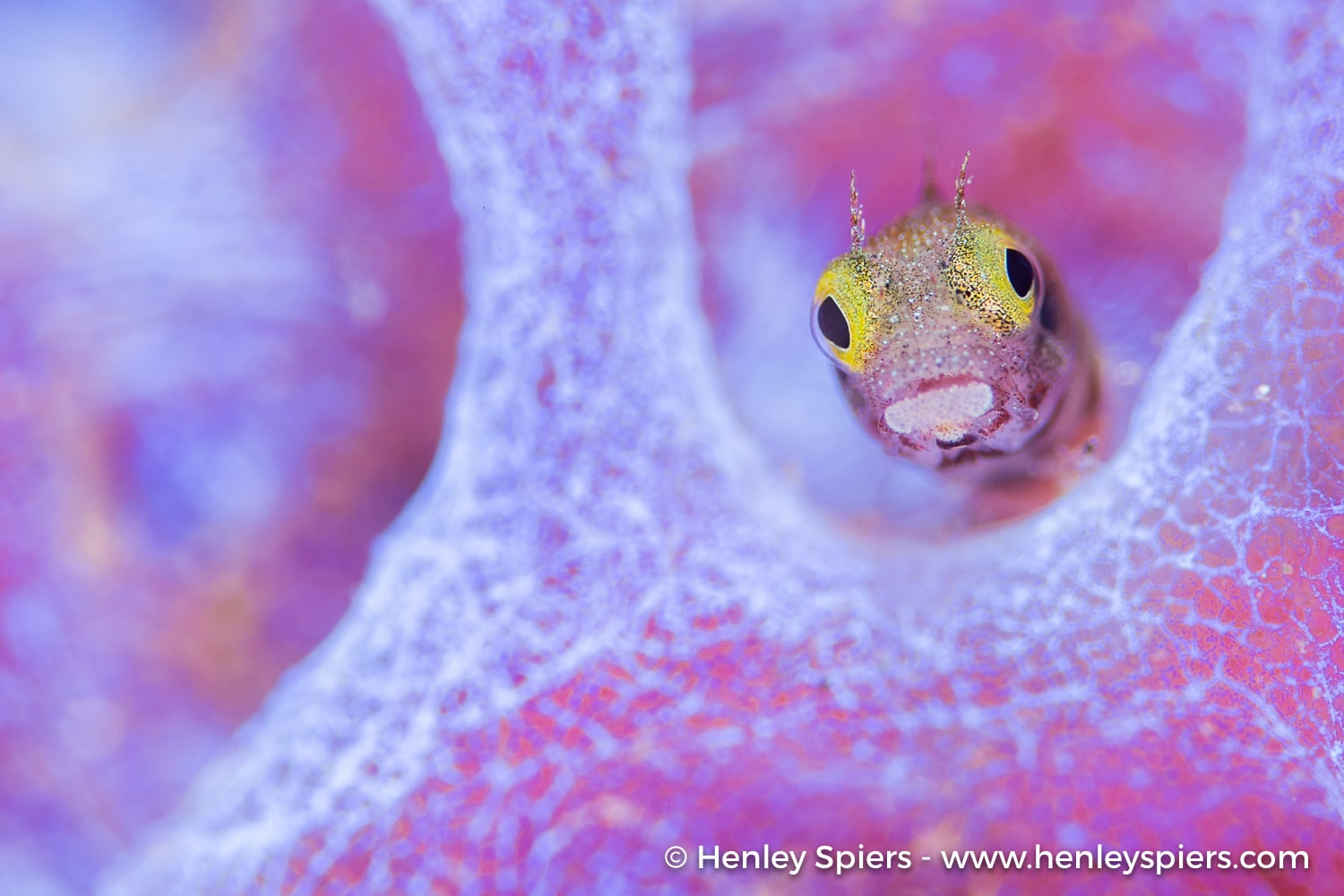Photo / Video News & Reviews
Scubaverse Underwater Photographer Interview: Henley Spiers

In an ongoing series, Scubaverse’s Underwater Photography Editor Nick Robertson-Brown talks to underwater photographers from around the world that he admires. In this blog: Henley Spiers.
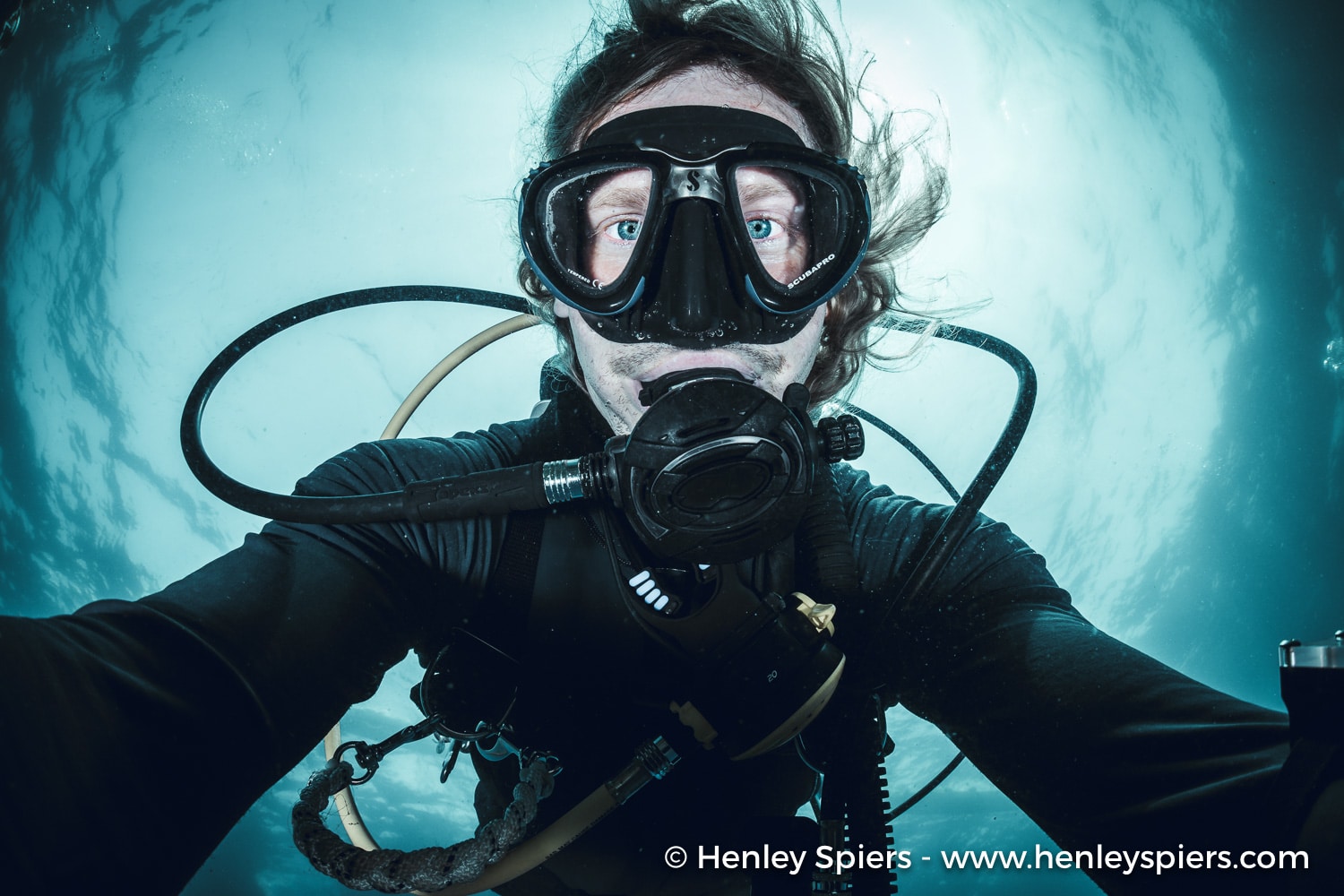 Henley Spiers’ all-consuming passion for the sea led him to quit his job in the corporate world to become a dive instructor, and then an underwater photographer. He is a regular contributor to DIVER magazine where his images can often be found on the cover. His work has been frequently awarded in competitions, including the Sony World Photography Awards, Nature’s Best and the Underwater Photographer of the Year contest. Conservation plays an important part in his philosophy and he collaborates with the Marine Conservation Society, Mission Blue and the Devon and Cornwall Wildlife Trusts. Half British and half French, he lives in Cebu, Philippines, with his wife (and favourite dive buddy) Jade and their daughter Apolline. Henley runs personalised underwater photography tours and workshops combining his love of diving, teaching and underwater photography.
Henley Spiers’ all-consuming passion for the sea led him to quit his job in the corporate world to become a dive instructor, and then an underwater photographer. He is a regular contributor to DIVER magazine where his images can often be found on the cover. His work has been frequently awarded in competitions, including the Sony World Photography Awards, Nature’s Best and the Underwater Photographer of the Year contest. Conservation plays an important part in his philosophy and he collaborates with the Marine Conservation Society, Mission Blue and the Devon and Cornwall Wildlife Trusts. Half British and half French, he lives in Cebu, Philippines, with his wife (and favourite dive buddy) Jade and their daughter Apolline. Henley runs personalised underwater photography tours and workshops combining his love of diving, teaching and underwater photography.
- www.henleyspiers.com
- Instagram: @henleyspiersphoto
- Facebook: @henleyspiersphotography
NRB: How did your underwater photography start?
HS: Well, I first picked up an underwater camera whilst working as a divemaster and then dive instructor in the Philippines and Indonesia. However, at that stage I was very much a ‘diver with a camera’ and it wasn’t until I took a trip to Lembeh that I really had my first go at underwater photography, renting a lovely Olympus mirrorless set-up and with the sole purpose of the dive being the creation of images. I caught the bug pretty quickly from there and soon invested in my own rig. When I moved to Saint Lucia to work as a the dive manager for a new dive shop I had the opportunity to really get shooting underwater on a regular basis and things snowballed fairly quickly from there!
NRB: What is your favourite u/w camera equipment (past & present) & why?
HS: I recently upgraded to the Nikon D850 and I am absolutely in love with it. The combination of super high resolution (45 MP), strong low-light performance and an ultra-fast focus system make it a dream camera for underwater photographers. I’m currently pairing it with a Nikon 28-70mm lens and the Nauticam WACP which is a groundbreaking development in underwater optics, and I’ve only just scratched the surface of what can be achieved with this beautiful bit of glass!
NRB: What would be your advice to anyone new to underwater photography?
HS: You can learn on your own, but you’ll save a lot of time and headaches by finding a good teacher. Immerse yourself in magazines, books, webpages and exhibitions and find the underwater photographers that you admire. Then get in touch with them and see what teaching options they offer, whether it be workshops or 1 to 1 sessions. Beyond that, understand that if you truly want to make progress as an underwater photographer, it must be the sole aim of your dive and dive trip. You will struggle to create memorable images if you are with a regular dive group, drifting at speed through a variety of dive sites. Either dive with other photographers or get a private guide, giving yourself the time and opportunity to create an image. Finally, and I’m quoting Alex Mustard on this, photographers are in the unusual position of being judged solely by their best work. People will only see the images you select as your best, and those are the only ones that matter. I consider it a good day if I create one image per day of diving that I am happy with – and I will usually take several hundred! So don’t beat yourself up about the ones that went wrong, that’s part of the process for underwater photographers of all abilities.
NRB: What, or who, has been your single biggest inspiration for your underwater photography?
HS: There are many underwater photographers and indeed photographers in general who inspire me, however, if pressed to choose only one, the single biggest influence has been Alex Mustard. I have attended a couple of his workshops which resulted in a step-change in my approach to the craft, and I am forever going back and dipping into his ‘Underwater Photography Masterclass’ book for tips before a shoot. He is the benchmark that I judge my own results by.
NRB: What image are you most proud of and why?
HS: I think it would have to be ‘Battle of the Tompots’, an image of two male Tompot Blennies fighting it out for mating rights under Swanage Pier. My dream images are ones that combine unique behaviour with an artistic rendition, which is easier said than done and was achieved in this shot. The best feeling in underwater photography, which can often be an exercise in patience and frustration, is when you know you got the shot, got something special. It’s a pure, natural high which gives me a buzz long after the dive is over. Fortunately, that image was also recognised more widely, with a category win in the Underwater Photographer of the Year and placing in a few other prominent contests. In fact, it was even featured as the Sunday Times ‘Photograph of the Week’! So it was really the full package and it’s the image I am most proud of.
NRB: Where is your favourite dive location, and is it for the photography?
HS: I’m not sure I’ve found it yet, I’ve been to many beautiful spots but I’m always excited for the next expedition. This November, I’m visiting the Sea of Cortez in Mexico and am tremendously excited for all of the big animals over there, from sea lions to whale sharks and, if we get lucky, even some marlin! These days, unless I’m teaching, I never dive without a camera so those two things are inextricably linked.
NRB: What are you views on marine life manipulation, moving subjects?
HS: I find it upsetting but I think there needs to be an understanding of how it happens before you vilify all those involved. First off, there has been a drastic increase in the number of divers and underwater photographers over the last few decades. The understanding of how we impact the environment has grown hugely in that time but diving and photography standards have not quite caught up. Look back at videos of Jacques Cousteau and you will see behaviour which would be widely denounced today. However, there is no doubt in my mind that he and his team were pioneers and, overall, did far more good for the oceans than harm. They were simply less aware than we are today of the human impact on marine life and marine ecosystems.
Likewise, when there were only a few hundred underwater photographers in the world, moving subjects and kneeling on the coral was commonly practiced. Those photographers created some beautiful images which set the standard and would then be emulated by the next generation. There is this cascading effect by the standard-bearers in the diving and underwater photography industry which is what, in my opinion, has driven the bulk of marine life manipulation. People are trying to emulate the images they see their favourite underwater photographers take. In some cases, marine life manipulation makes that easier, and so the dive guides will facilitate that process to ensure their guests’ happiness. With the volume of underwater photographers pursuing the same type of marine life these days, that problem escalates quickly.
The problem is not with the dive guides – they are in a service industry and purely trying to give the customer what he/she wants. You have to go further up the chain and look at what images are being held up as the gold standard in underwater photography. Prominent underwater photographers and judges in competitions should think very carefully about what they are putting out there to the general public. Ultimately, the biggest correction to critter manipulation will happen once the images awarded are ones where there isn’t even the hint of marine life manipulation. Now, there is some frustration for photographers there because sometimes you genuinely capture a very unusual behaviour or a critter in an unusual position. However, underwater photographers (especially those in prominent positions) should not shout about or share images which could have been more easily achieved with manipulation. I think that is how you start to stem the flow when it comes to this issue.
NRB: What do you look for when you are making your images?
HS: I guess I’m looking for three things: subject, behaviour and background. I look out for engaging subjects and I look out for any signs of unusual behaviour (cleaning, mating, fighting, flirting…etc) – both of those probably seem pretty obvious. I think what can often be neglected is looking out for good background, such as a colourful sponge, sometimes you are best off seeking the background first and then finding the subject.
NRB: What motivates you to take u/w photos?
HS: At heart it is an all-encompassing passion for the sea and being able to share some of what I see and feel underwater with a wider audience. I fell in love with diving long before I first held a camera and, during that time, would wax lyrical about how incredible it was down there to anyone who would listen. With underwater photography, I have better way than words of communicating the wonders of the marine world.
NRB: If you could photograph any one thing/place what or where would that be?
HS: Hmmm well if I had three wishes, genie style, I would go for: whale sharks mating, leatherback turtles mating and thresher sharks hunting, ideally all in the same frame!
Find out more about Henley Spiers by clicking here.
Blogs
Jeff Goodman Launches Underwater Moviemaker Course with NovoScuba

Transform Your Dive Experiences into Cinematic Masterpieces
NovoScuba has partnered with acclaimed underwater filmmaker Jeff Goodman to introduce the Underwater Moviemaker Course—a revolutionary program designed to equip divers with the skills to capture the breathtaking beauty of the underwater world.
Whether you’re an aspiring filmmaker, an avid diver, or a photography enthusiast, this course offers the tools and expertise needed to create stunning underwater videos. From vibrant coral reefs to curious marine life, you’ll learn how to film, edit, and produce captivating underwater stories, all with expert guidance from a seasoned professional.
Jeff Goodman: A Legacy in Underwater Filmmaking
Jeff Goodman brings over 40 years of experience in underwater film production for television to this course. Reflecting on his career, Jeff said:
“Although technology has dramatically changed, the basics of underwater filming remain constant. This course covers crucial skills for producing great videos. Whether you’re creating professional broadcast films or high-quality hobby videos, the fundamental principles are the same.
A camera operator must master their equipment to capture those magical underwater moments effortlessly. But beyond technical know-how, underwater filmmaking is about having fun and enhancing your diving experiences. So, take your time, learn at your own pace, and enjoy this creative journey.”
About NovoScuba
Founded in 2023, NovoScuba is reshaping dive education with a comprehensive, digitally native platform. Offering cutting-edge training programs for divers at all levels, NovoScuba sets a new benchmark in the diving industry by combining innovation with accessibility.
With ISO-certified courses, a student subscription model, and multilingual support, NovoScuba ensures that dive education is inclusive and engaging. More than just a training provider, NovoScuba fosters a global community of divers committed to exploration, collaboration, and sustainability.
Join the NovoScuba Underwater Moviemaker Course Today!
Dive into the world of underwater filmmaking and start creating cinematic stories that inspire. Learn more about the course and enroll today at www.novoscuba.com/novoscuba-underwater-moviemaker-course.
EXCLUSIVE: Jeff Goodman interviews Mark Spiers, CEO of New Scuba Diving Training Agency NovoScuba
NovoScuba’s Game-Changing Approach for Dive Store Owners: WE PAY YOU!
The diving world thrives on passion and adventure, but for many dive store owners, the financial and operational challenges can be as deep as the ocean.
NovoScuba, an emerging force in the diving world, is on a mission to transform this landscape for the better. With a revolutionary approach to dive store and training agency partnerships, NovoScuba is setting new standards for how dive stores can thrive while keeping their focus on delivering exceptional diving experiences.

A New Paradigm: NovoScuba’s Bold Mission
NovoScuba’s mission is straightforward yet profound: to disrupt the traditional dynamics between dive store owners and training agencies. Traditionally, dive stores have been subjected to substantial fees charged by training agencies, for membership, materials and certifications. These costs have often placed a heavy financial burden on store owners, cutting into their profits and limiting their ability to offer competitive prices to customers.
NovoScuba flips the script by offering a model where dive stores earn money, instead of paying high fees. Dive stores receive commissions for every student they register, and their certification costs are covered. This new model not only boosts profitability but also ensures clients get top-quality training at unbeatable prices.
Financial Upsides: Earn From Student Registration
NovoScuba’s approach is simple yet revolutionary. Dive stores partnering with NovoScuba can earn commissions for every student they enroll.
Here’s how it works: For every student enrolled through NovoScuba, dive stores receive a commission. Each student enrolled will receive their e-learning materials and certification credit included in their subscription. This arrangement is a significant departure from the traditional model, where dive stores often struggle to manage high overhead costs related to training fees and certification expenses.

NovoScuba’s approach ensures that dive stores can focus on what they do best—providing top-notch diving experiences—without being bogged down by excessive financial burdens, and the need to carry large stocks of materials.
Quality Training at a Great Price
NovoScuba stands out by offering high-quality, ISO certified, training that doesn’t break the bank, in fact our students will pay less than with most competing agencies. Clients benefit from top-notch education and safety standards at competitive prices. Dive store owners can confidently promote NovoScuba’s programs, knowing they’re offering fantastic training at affordable rates. This balance of quality and affordability helps dive stores build a strong reputation and attract more customers.
Your Brand is Your Business: NovoScuba’s Commitment to Showcasing Your Identity
At NovoScuba, we understand that your brand is your most valuable asset, and we’re committed to putting it front and centre. Unlike agencies that charge high fees to promote their own brand, we believe in investing in yours. With NovoScuba, you won’t be paying to advertise someone else’s logo alone, — our focus is on showcasing your unique identity. Certifications prominently feature your brand, as well as the training agency, reinforcing your store’s image and brand every step of the way. We’re here to support and elevate your brand, ensuring that your investment directly benefits your business.
Affordable Membership: An Investment in Your Success
NovoScuba’s membership model is designed with dive store owners in mind. Membership fees are kept low and include annual Pro member fees for your team. Payment can be made monthly or annually in your local currency, avoiding the hassle of exchange rate fluctuations. NovoScuba promises no exchange rate changes without a six-month notice, ensuring financial stability and simplifying budgeting. With a membership lasting 12 months from date of joining, you’ll enjoy a full year of NovoScuba’s benefits and support.

Streamlined Operations: Simplifying Your Workload
Handling administrative tasks can be a challenge, but NovoScuba makes it easier. We’ve streamlined certification procedures and reduced paperwork to help dive stores operate more efficiently. Certification processing is quick and straightforward, allowing more focus on teaching and customer service. Our system minimises bureaucracy by storing necessary forms in student profiles, reducing paperwork and administrative delays.
Crossover Made Easy
For dive stores looking to transition to NovoScuba’s model, the crossover process is designed to be smooth and hassle-free. NovoScuba provides support to ensure that the transition is as seamless as possible, helping dive store owners integrate into the new system with minimal disruption. Experienced dive Pros don’t need to undergo extensive retraining. Our crossover is designed to familiarise Pros with NovoScuba’s user-friendly platform, standards and course structures, and not to waste time and expense re-training in water.
With just a few simple steps, you’ll be ready to offer top-notch training through NovoScuba.
Comprehensive Business Support and Training Included in Your Membership
NovoScuba goes beyond financial benefits by offering experienced support and training. This value added service includes:
- Business Training: Optimise your operations with guidance on marketing, customer service, and best practices.
- Marketing and Promotion: Access resources to attract new customers and boost your store’s visibility. Enjoy cross promotions with NovoScuba to gain increased exposure.
- Ongoing Support: NovoScuba’s commitment to its partners extends beyond initial training and setup. The company offers ongoing support to address any issues or questions that arise. This continuous support ensures that dive store owners have a reliable resource to turn to whenever they need assistance.

Embracing Digital Natives: Instant Evolution and Continuous Improvement
NovoScuba’s digital-native approach is a game-changer. Leveraging cutting-edge technology, we ensure our services evolve and improve swiftly. Dive stores benefit from instant updates, the latest features, enhancements, and effective solutions, keeping them ahead of the curve. This continuous improvement helps dive stores stay competitive and deliver exceptional services. Whether it’s a new course update, additional marketing resources, or improved e-learning functions, NovoScuba’s digital infrastructure ensures that dive stores are always equipped with the most current and effective solutions. This continuous evolution not only helps dive stores stay ahead in a competitive market but also ensures they consistently provide top-quality services to their clients.
Why Is NovoScuba Doing This? – Fair Profit Sharing for Greater Access and Growth
At NovoScuba, we’ve taken a bold step by paying commissions to stores rather than following the traditional model of training agencies charging high fees. Our mission is to make diving accessible to everyone and to foster a growing community of new divers and continued education. By redistributing profits more equitably between stores and training agencies, we aim to create a more supportive and collaborative environment within the industry. We believe this approach not only helps individual stores thrive but also stimulates overall growth and innovation in diving. Our commitment to fair profit sharing reflects our dedication to the long-term health and expansion of the diving community.

Everyone is getting a piece of the pie.
Getting Started: Join the NovoScuba Revolution
Ready to revolutionise your dive store experience? NovoScuba is here to support your journey toward reduced costs, increased profitability, and enhanced operational efficiency. Get in touch with our team to learn how NovoScuba can transform your business.
For more information, email info@novoscuba.com or visit www.novoscuba.academy.
Blogs
The Benefits of Underwater Photography Workshops

Are you just getting started out in underwater photography or are you a seasoned shooter who wants to take their images to the next level? Whatever you experience or ability, here’s an overview of underwater photography workshops.
What is an Underwater Photography Workshop?
The first thing to note is that this is not ‘school’! There are no compulsory classes and at workshops you are free to pick and choose what you take part in, or otherwise.
A huge part of learning and developing your skills is through experimentation, trial and error, responding to feedback, and honing your technique. Underwater photography workshops provide you with the perfect platform for practice and improvement.
There is no better alternative to hands on experience in an environment that is 100% dedicated to your development. Reading informative articles and watching videos on YouTube can never replace the value of one on one time with your camera rig, underwater!
Underwater photography workshops are generally structured around core components, namely: presentations, underwater practice, feedback and critique sessions, troubleshooting/one-on-one sessions, and technical support.
Other components of a workshop include dining, relaxing, and time for socializing too!

What Topics do Underwater Photography Workshops Cover?
Depending on the pro, the type of workshop and regional diving highlights, a wide range of topics may be covered from composition and lighting through to shooting techniques and editing.
Benefits of an Underwater Photography Workshop
- Improve Your underwater photography
- Learn from professionals
- Learn from other participants
- Expand your photography knowledge and understanding
- Try put new techniques
- Learn how to maximize your camera rig
- Phenomenal travel opportunities
- Memorable experience and new friendships

Underwater Photography Workshops in the Lembeh Strait, Indonesia
When it comes to underwater photography workshops that focus on shooting macro, muck diving, and unusual marine species, there can be no better destination on the planet than the Lembeh Strait.
The Critter Capital of the World, a Muck Diving Mecca, and the Twilight Zone are just a few of the names that have been given to this stretch of water over the years due to its high density, and diversity, of rare and unusual marine life.
Some of Lembeh’s most iconic species include the hairy frogfish, Pontohi pygmy seahorse, the Lembeh sea dragon, Mandarin fish, Bobbit worms, Rhinopias scorpionfish, flamboyant cuttlefish, tiger and harlequin shrimps, ornate ghost pipefish, harlequin crabs, and where do we start with octopus? Here’s just a few… wunderpus, mimic, blue ring, hairy, long arm, starry night, and coconut… and the list goes on!
Dive conditions in the Lembeh Strait can be extremely favourable for underwater photographers. There is little to no current making both moving around and remaining stationary a breeze. The comfortably warm water temperatures reduce the cold that can also set in when not on the move.
Lembeh Resort and Underwater Photography Workshops
Lembeh Resort not only offers luxury accommodation in the Lembeh Strait but it is also offers a complete suite of facilities for underwater photographers and enthusiasts. Here is a ‘snapshot’ of the camera and imaging services that are on offer at Lembeh Resort – inside and outside of underwater photography workshops:
Photography Facilities
Lembeh Resort offers a suite of facilities for underwater photographers, including:
- The only Backscatter Authorized Photo Center in Asia
- Photo Center offering camera, housing, lights and accessory rentals and purchases, onsite repairs, onsite 3D printing of small components, professional support and assistance, full workshop support
- Full time onsite Photo Pro
- Full time onsite Marine Biologists
- Marine biology and underwater photography trained Dive Guides
- Spacious camera room with individual work spaces, lights, and power points
- Varied diving options including single dives in the Lembeh Strait, two or three tank dive trips, day trips to Bangka, east coast Lembeh trips, blackwater, bonfire, night, and Mandarin fish dives.

Capturing Critters in Lembeh Underwater Photography Workshop 2025
The renowned Capturing Critters in Lembeh Underwater Photography Workshop is back in January 2025 for the 12th year running!! This unique workshop is hosted by not one but three worldclass photo professionals. The 2025 workshop features: Ron Watkins (USA), Paul Duxfield (UK), and Renee Capozzola (USA). The week-long workshop promises to be packed with incredible diving, Pro presentations, and one-on-one instruction and feedback.
2025 Workshop Schedule and Dates:
- Pre-Workshop: January 8th ––10th (time to relax and unwind after traveling and enjoy some of Lembeh’s famous dive sites.)
- Workshop: January 11th – 17th (Capturing Critters in Lembeh 12th Annual Workshop)
- Workshop Extension: January 18th – 19th (Additional Day Workshop Extension)
- Post-Workshop: January 20th – 21st (Stay additional nights and enjoy extra diving days or some time to relax and explore more of North Sulawesi)
Find Out More:
Meet the pros and find out more about the Capturing Critters in Lembeh 2025 underwater photography workshop, including prices and workshop inclusions, here:
If you are ready to book your place on the January 2025 Capturing Critters in Lembeh Underwater Photography Workshop – contact Lembeh Resort at: reservations@LembehResort.com.
-

 News2 months ago
News2 months agoIconic SS United States to become the World’s Largest Artificial Reef
-

 News3 months ago
News3 months agoBook Review – 52 Assignments: Underwater Photography
-

 Gear News3 months ago
Gear News3 months agoDYNAMICNORD – New German diving brand enters the British market
-

 News3 months ago
News3 months agoExploring Cenote El Pit: A Diver’s Dream
-

 Gear News3 months ago
Gear News3 months agoTry BARE drysuits (and maybe even win one!) this Friday with Sea & Sea at North West Dive Fest
-

 Marine Life & Conservation3 months ago
Marine Life & Conservation3 months agoBook Review: Coral Triangle Cameos
-

 Blogs2 months ago
Blogs2 months agoDive the Egyptian Red Sea this Autumn with Regaldive
-

 News3 months ago
News3 months ago2024 Ocean Art Underwater Photo Competition Announced


